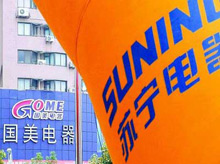Shortly after Best Buy announced its ambitious expansion, Chen Xiao,
Why not simply improve gross margins, like Best Buy has done? Sun notes that although basic prices and the accounts payable period are negotiated by the headquarters, due to the intense price wars, the nationwide branches of the suppliers take considerable responsibility for the local markets, and are granted price autonomy in order to compete. Under such circumstances, plans change, and so do prices.


